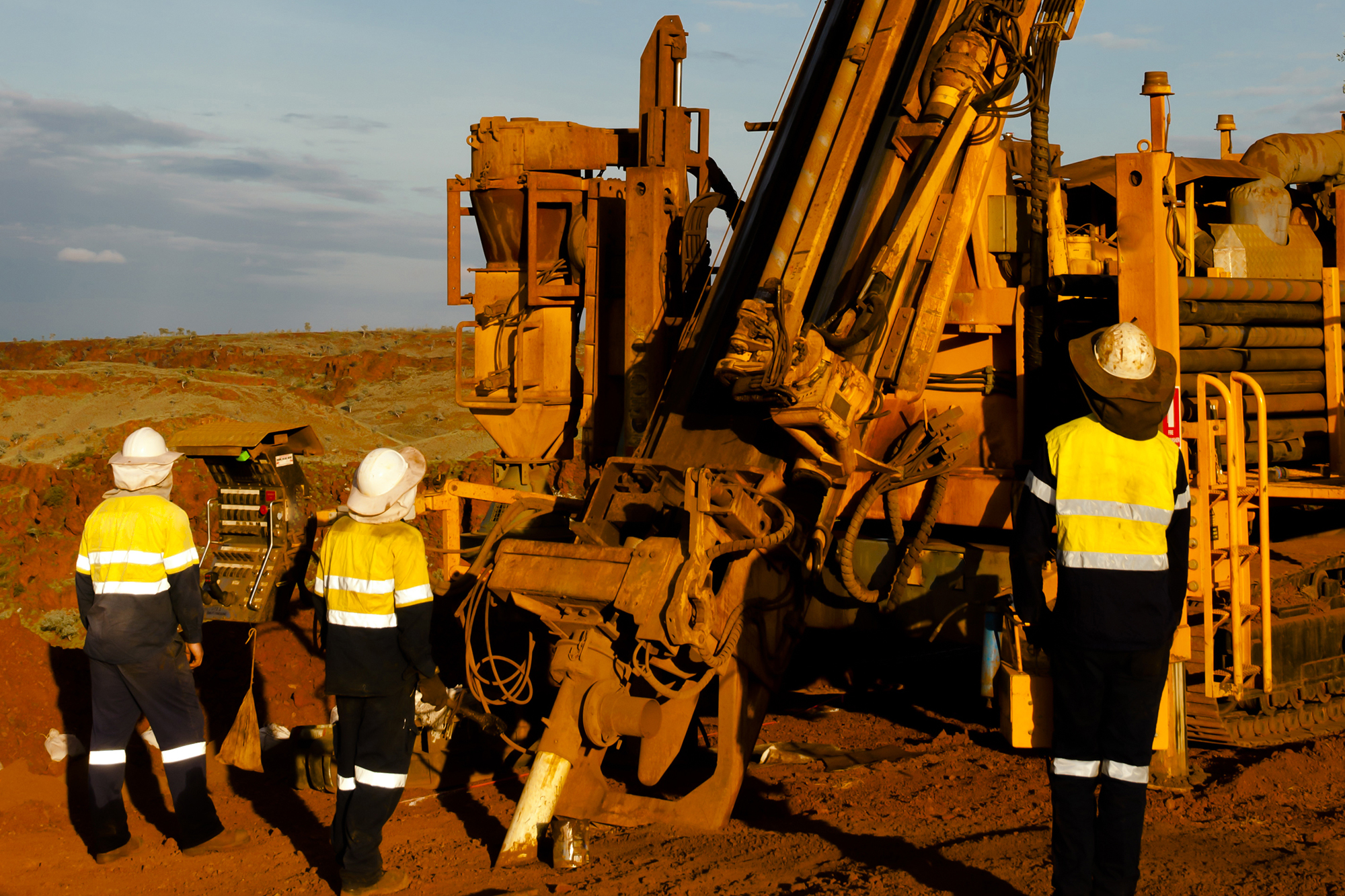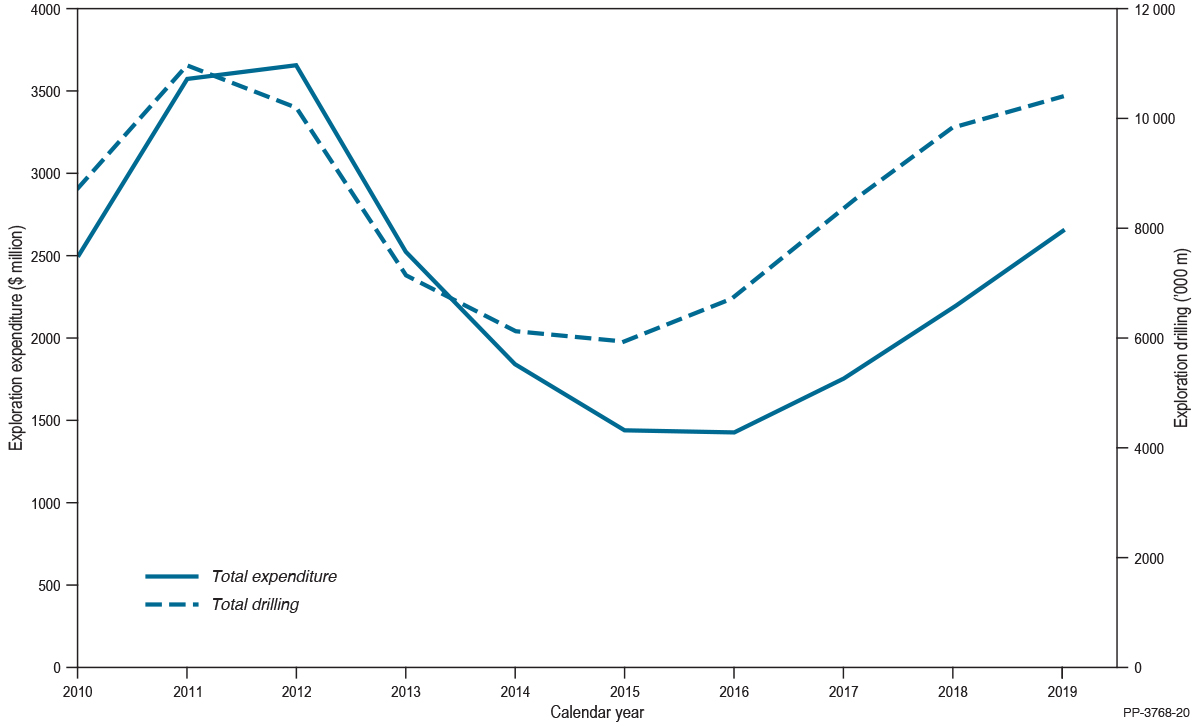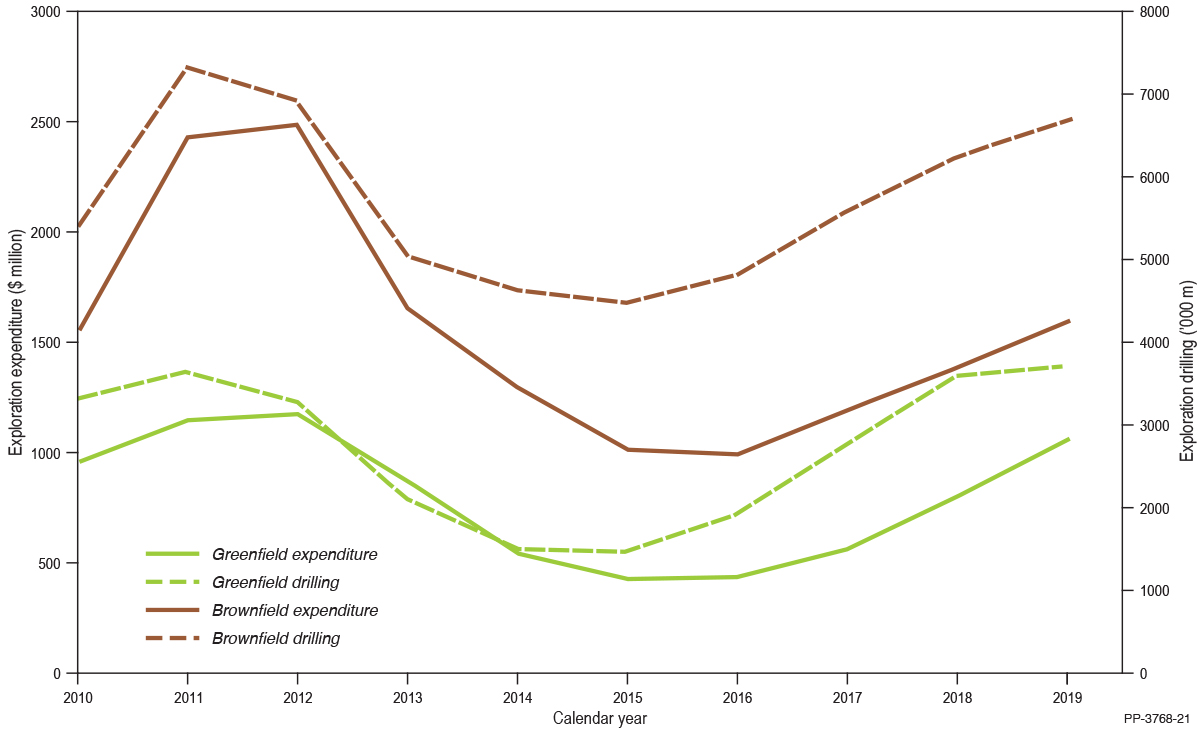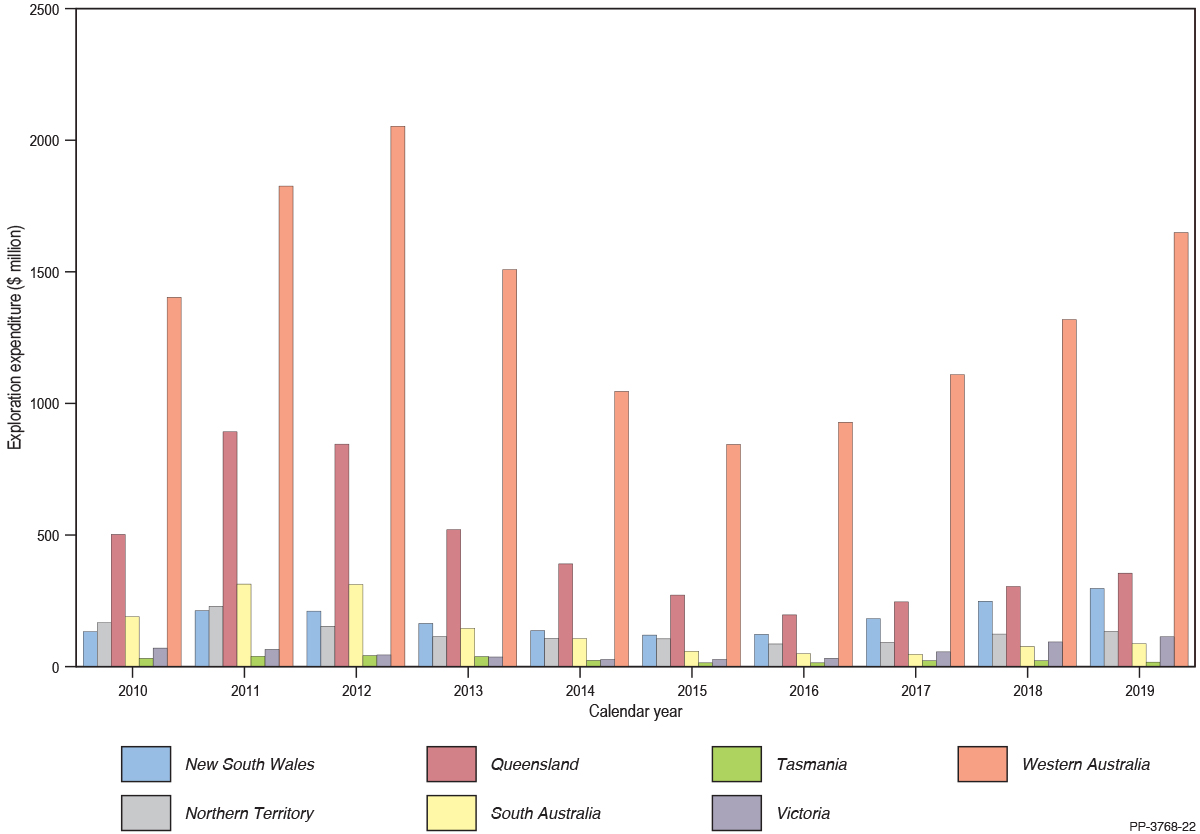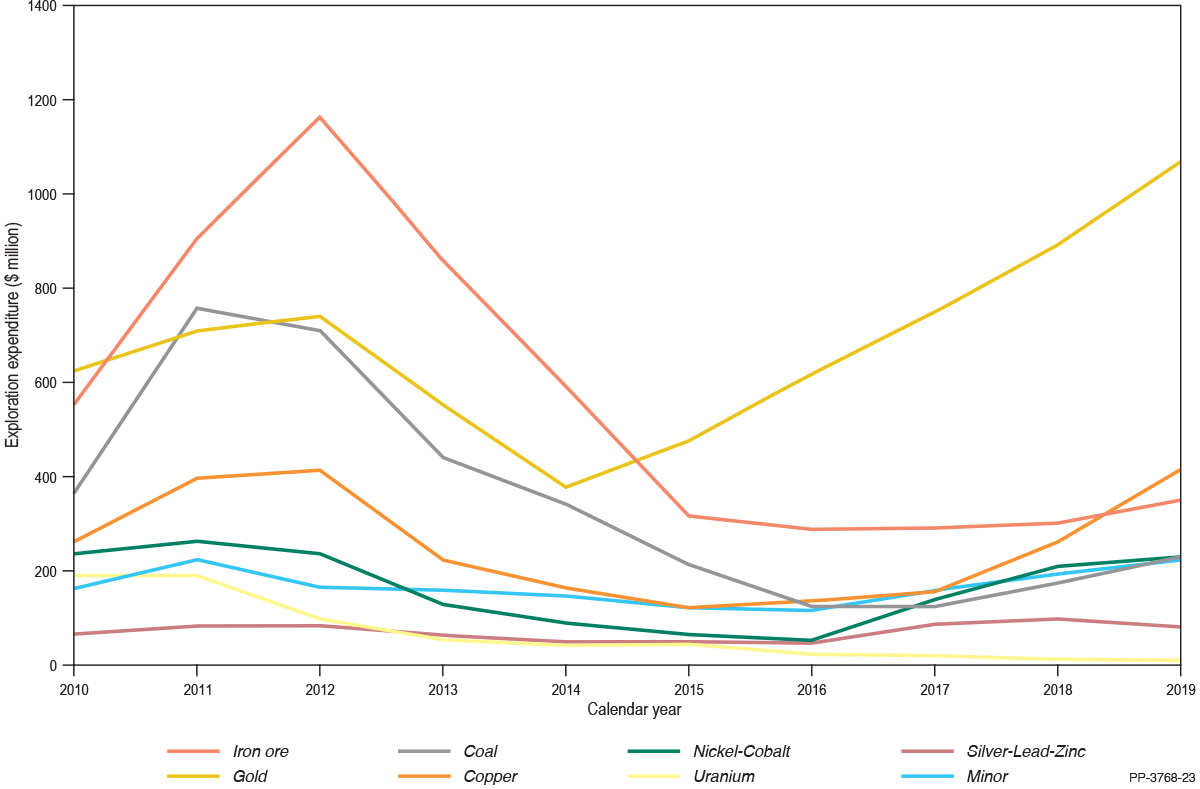Mineral Exploration
Quarterly reports published by the Australian Bureau of Statistics Mineral Exploration data11 highlighted that mineral exploration in Australia remained strong in 2019 with total mineral exploration expenditure for the calendar year up 21% to $2,648 million compared to the 2018 calendar year, which had expenditure of $2,184 million (Figure 3).
In the search for new mineral deposits, exploration expenditure and drilling in greenfield tenements was up 32% from $800 million in 2018 to $1,057 million in 2019 and metres drilled up 3% to from 3,594,500 m in 2018 to 3,712,200 m. Likewise, 2019 expenditure and drilling around existing deposits (brownfields) was up 15% to $1,591.7 million on 2018 ($1,384 million) and metres up 7% to 6,678,800 compared from 6,246,700 m in 2018 (Figure 4).
All states apart from Tasmania, which was down 26% (from $22 million to $16 million), showed increases in mineral exploration expenditure from 2018 to 2019. Exploration expenditure in New South Wales and Victoria was at the highest level ever recorded with New South Wales recording $296 million in exploration, up 20% from 2018 ($247 million), and Victoria recording $113 million, up 21% from its previous high in 2008 of $93 million (Figure 5).
Western Australia attracted $1,648 million in exploration expenditure in 2019, accounting for 62% of the national expenditure. Queensland ranked second as an exploration destination, recording an expenditure of $354 million.
Gold is the most explored for commodity and accounted for 40% of all mineral exploration expenditure in 2019. Over the past five years, the high price of the precious metal has resulted in a new ‘gold rush’ with exploration expenditure for this commodity reaching a new record of $1,068 million in 2019 (Figure 6). As well as record prices and exploration expenditure, the sustained interest in gold over the past five years has led to large tonnages of resources being upgraded.
Copper had the biggest expenditure increase of 60% from $261 million in 2018 to $415 million in 2019, slightly higher than the previous high of $414 million in 2012. Copper was the second most explored for commodity in 2019, ahead of iron ore which was up 16.2% from $301 million in 2018 to $350 million.
Compared to 2018, there were also falls in 2019 exploration expenditure. This was seen for base metals (silver, lead and zinc; -18%), uranium (-17%), and diamonds (-17%). Diamond exploration expenditure continued to fall in the early quarters of 2020 as the Argyle mine in Western Australia closed in November 2020.
11 ABS, Quarterly Statistics, Mineral and Petroleum Exploration Australia September 2020. See https://www.abs.gov.au/statistics/industry/mining/mineral-and-petroleum-exploration-australia/latest-release#data-download (accessed 18 December 2020).
Banner image: The mining sector employed some 243,000 people in 2019, with many more employed in related industries. Exploration initiatives such as the Australian Government’s Exploring for the Future program contribute to Australia’s future prosperity by supporting regional development and helping industry make new discoveries.


